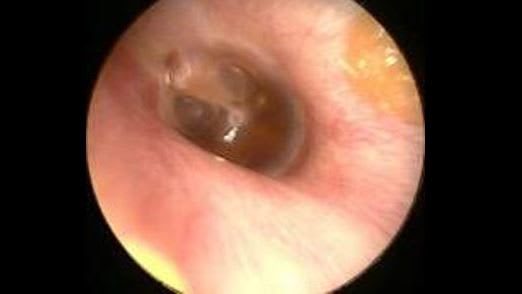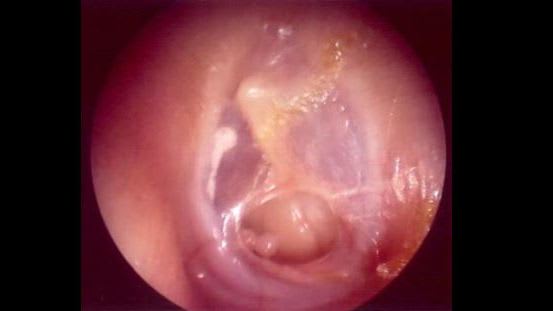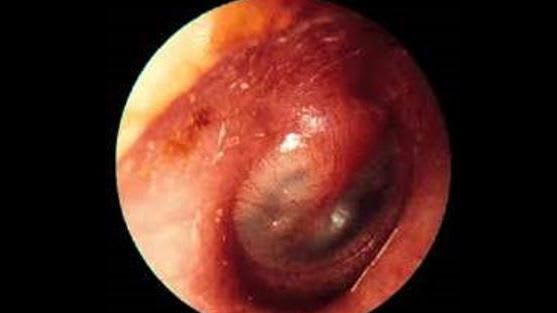Ears


If you see a fungal infection like this use Locacortan Vioform drops rather than our standard Sopradex or Kenacomb otic.
Pinna or auricular hematoma, is most commonly caused by blunt trauma to the ear. The cartilage of the ear derives its blood supply from the skin. When this skin gets pulled up because of accumulation of blood following trauma, the cartilage is deprived of nutrition and dies. The ear cartilage contracts and shrivels, giving the appearance of a cauliflower. This appearance is permanent once the cartilage death occurs. It is commonly seen in wrestlers, boxers, and martial artists, and therefore it is also called boxers ear or wrestlers ear.

You can see fluid behind the drum which is not purulent. Also the drum is not bulging.

The tympanic membrane (drum) appears very red and the normal triangular light reflection has been distorted by the bulging drum. Looks painful.

The greater wax moth (Galleria mellonella), a dull-colored, generally boring and common moth, has the most extreme hearing sense of any known animal. It’s capable of hearing sounds frequencies of up to 300kHz, blowing away our piddly human abilities (at our best, humans can only hear up to about 20kHz).

Generally small perforations close on their own with some sources quoting 90% at 6 weeks. Larger perforations like the one shown have a much lower spontaneous closure rate.
After killing it with the cooking oil of your choice it can then be removed. Either flushed out or carefully using forceps.

Of note: Frey syndrome is characterised by sweating and flushing of the ear in response to eating. Occurs rarely after a parotidectomy.

It is a nasty bulging drum with dark red fluid behind it.

A rabbit can rotate its ears 270 degrees. Incidentally if someone says you have "rabbit ears" it is slang that you are overly sensitive to criticism.